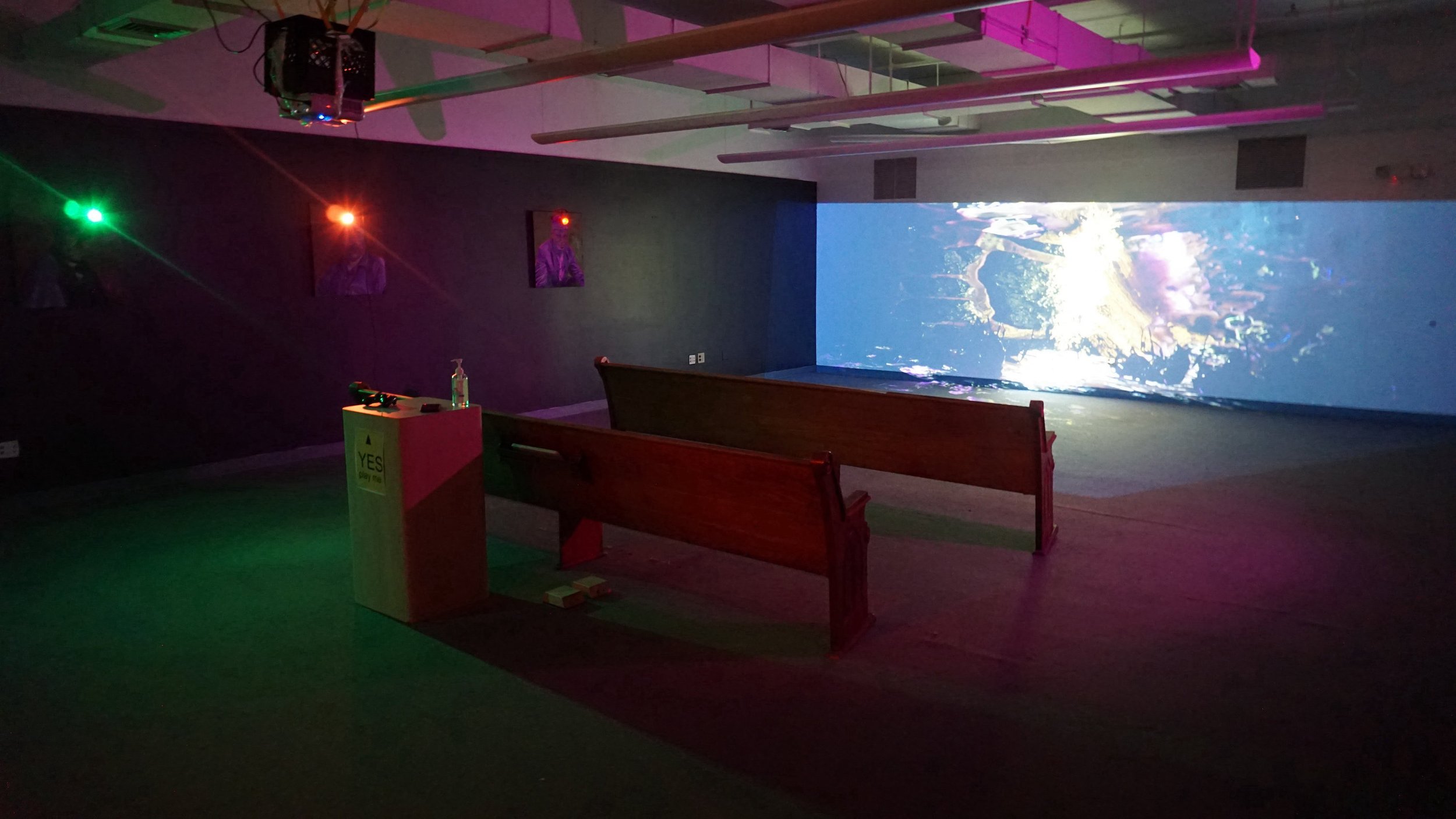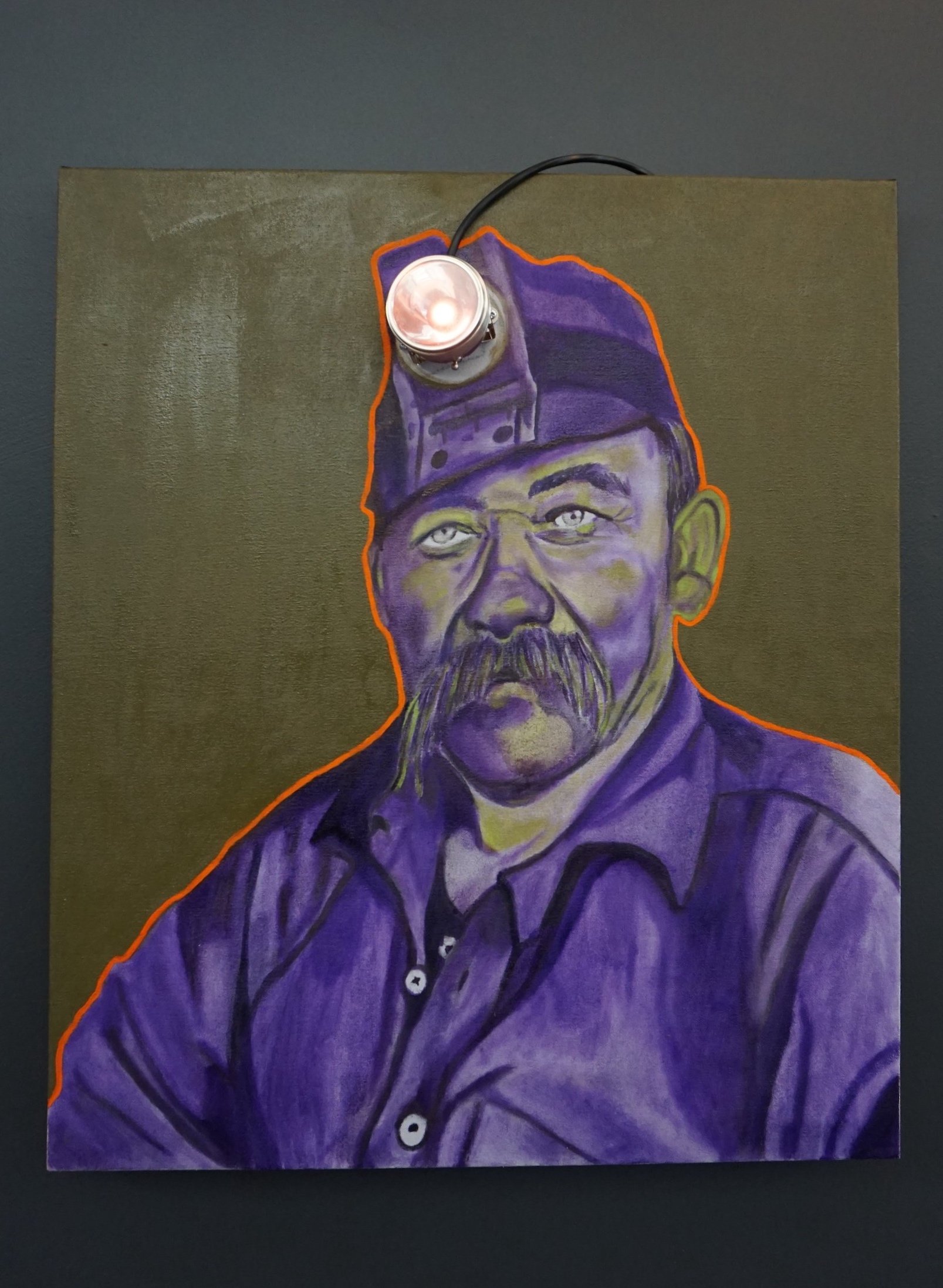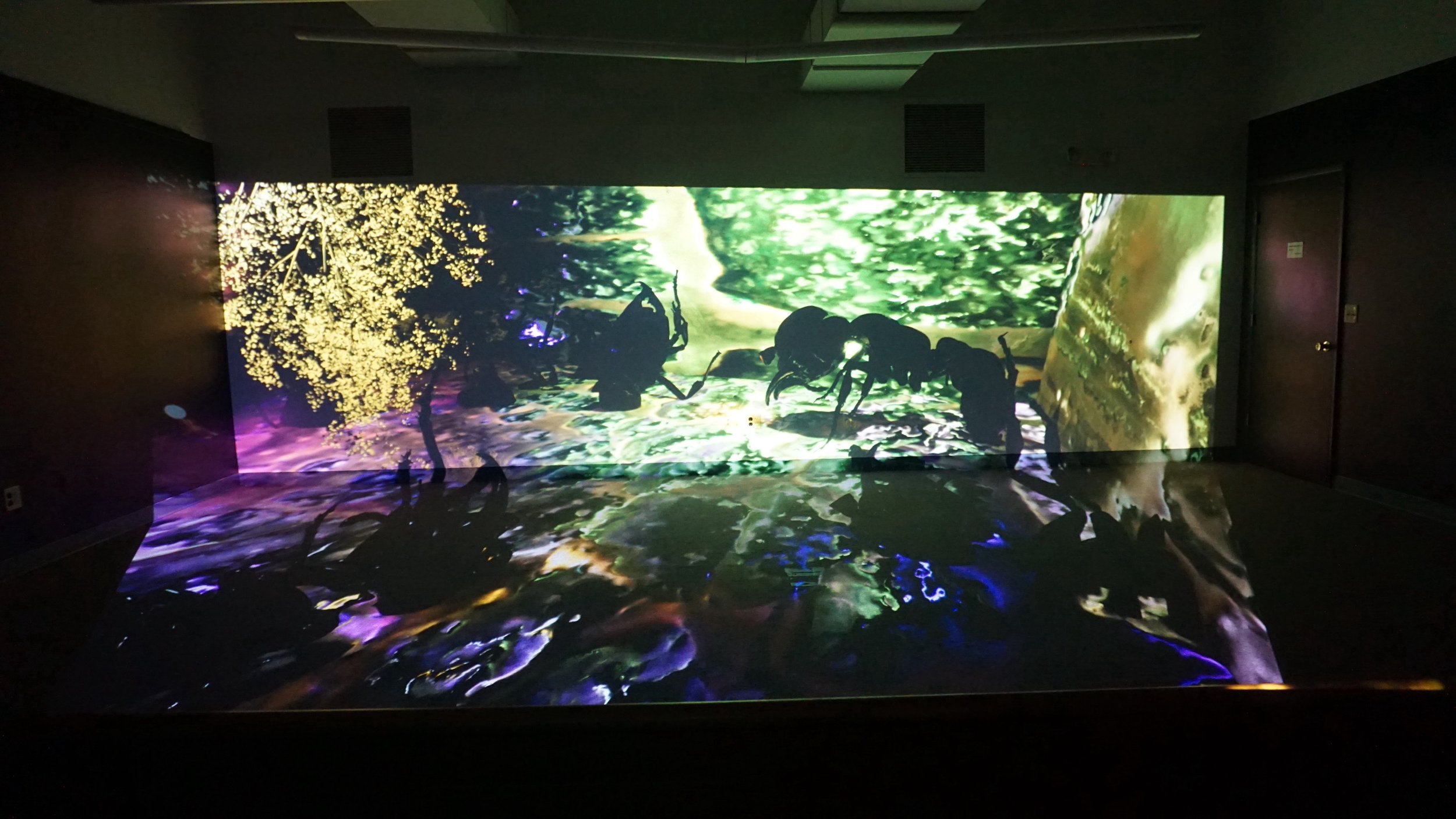
Appalachian Extraction
The Appalachian Extraction series was created in collaboration with Ernie Roby-Tomic as part of an immersive installation. This exhibition is also viewable through your web browser, VR Headset, and mobile device by clicking here. A strong internet connection and compatible hardware may be required to view.
Watch the recorded online seminar for more project information and a performance component below:
Historically, Appalachia has been a region forgotten by the rest of the country, in part due to its extreme poverty and working-class relationship with the environment, often deemed “backwards” in the forward thinking, technological age we live. With the shift from Fordism to post-Fordism in Appalachia in the 20th century, there has been a direct effect on the art that is being produced there; reflective of labor, the economy, the environment, and the social structures of the region. The artwork composed in and about the region is engrained in past environmental labor histories.
In 2006, thirteen men suffocated in darkness two miles deep in the Anker West Virginia Mining company’s Sago Mine when a sudden explosion occurred, choking all exits from their gravesite. Mining disasters are so ubiquitous to the exploited working-class of mineral-rich geographical locations, that a whole genre of music - disaster ballads - emerged globally. This story of miners leaving for work and never coming home has become a trope in Appalachia part of the fabric of Appalachian orality since the 1870s with John Wallace Crawford’s 1877 poem Only a Miner Killed. In the years following, Appalachian music traditions would adopt the lyrical-memorial forms into songs such as Coal Tattoo by Billy Edd Wheeler, and later updated with feminist perspectives thanks to Jean Ritchie’s West Virginia Mine Disaster written after the Hominy Falls mine disaster, or Hazel Dickens’s The Mannington Mine Disaster.
As artist Ernie Roby-Tomic researched the Sago Mine Disaster, he discovered the blurring between fact and fiction within the Mine Safety Health Administration, turning the blame from poor safety regulations to “an act of god,” a poplar tree that had been struck by lightning, causing the disaster—clearly a work of fiction masquerading as fact. He uses Jean Ritchie’s West Virginia Mine Disaster as audio material in the virtual reality rendering of the Sago Mine Disaster allegory in the experience titled When the Poplar Tree Struck the Sago Mine. He thinks of the piece as a much-needed audiovisual disaster ballad, bringing digital literacy to the format. In this synthesis, Williams-Roby also realizes the connection between the labor of his father and other coalminers that provided the electricity necessary to power these interactive electric fantasies by mining the coal only miles from his home.
We are, as a digital-media culture, powered electronically by Appalachian labor. The market of video games is often global in scope, localized to produce a relatable experience from region to region. In the experience Williams produces, one encounters LiDAR (Light Detection and Ranging) scans of West Virginia mines and hollers extracted from Google’s servers using the OpenGL script. Worker ants with mining helmets following the day to day rituals of labor, as ants equate to human miners in a Marxist nightmare. These worlds are fatalistic, and they are extractions of the disasters of Appalachia. The viewer, as the player, is confronted by the facts and fictions of this incident, but not just this incident, the history of incidents, repeated time and again in the state, region, nation, and world. Roby-Tomic connects the storytelling oral traditions of Appalachian songs, cryptids, and ghost stories with the digital storytelling medium of video games.
Say, did you see him walking?
it was early this morning
He passed by your house on his way to the coal
He was tall, he was slender,
and his blue eyes so tender
His occupation was miner,
West Virginia his home
It was just about noon, I was feeding the children
Ben Moseley come running for to give us the news
Number eight is all flooded,
many men are in danger,
And we don’t know their number,
but we fear they’re all doomed
So I picked up the baby and I left all the others
For to comfort each other and pray for our own
There’s Timmy, fourteen,
and there’s John not much younger,
Soon their own time will be coming
to go down the black hole
Now if I had the money to do more than just feed them
I’d give them good learning, the best could be found
And when they grew up
they’d be checkers and weighers
And not spend their life drilling in the dark underground
And it’s what will I tell to my three little children?
And what will I tell his dear mother at home?
And it’s what will I tell to my poor heart that’s dying?
My heart that’s surely dying since my darling is gone
Say, did you see him walking?
it was early this morning
He passed by your house on his way to the coal
He was tall, he was slender,
and his blue eyes so tender
His occupation was miner, West Virginia his home
-Jean Ritchie, West Virginia Mine Disaster
The history-based paintings of Ali Printz sourced from unnamed miners in various found photographs spanning almost a hundred year period and from various states within Appalachia, demand attention as their vintage mining lights flicker on and off. Each mining light was once active on the helmet of an unknown miner, acquired over the last several years from auctions and antique shops. Printz seeks to give agency to the forgotten miners—perhaps victims of their own mining disasters over the years—by replicating their images and creating a “story” through paint and objects. The chosen monochromatic palette of each miner is swathed from noxious mine runoff and chemicals, produced throughout the coal refinement process and often dumped in rivers and streams. Deep purple, a color harvested from a process of refining carbon-based residue and used as a dye for clothing, the rust red-orange of slag, and the neon green of radioactive waste from coal used in nuclear power dominate in varying monochromatic colors in each portrait. The brilliance of the colors reflect beauty, but also the pollution of mind, body, and soul through extraction. The paintings become caretakers of memory and history, yet project the truth of the present, as the horrors of environmental labor continue indefinitely in this moment, complementing the initial environment created by Roby-Tomic. The untold stories of the photographs, the mining lights, and the created portraits from these objects reflect the replaceable nature of extraction and its workers, lost to history.
The exhibition is meant to disorient and mimic the interior of a coal mine, surrounded by dark walls, ceiling, and floors. The video game loop created by Williams-Roby mimics the interior of the Sago Mine in collapse, in darkness, confusion, and hypnagogic dissociation. The bodies of miners are replaced by those of ants, degraded and expendable. Surrounding the video flanked by two walls, are six portraits of anonymous miners, painted in monochromatic colors that mimic the stages of coal production through processing and runoff. Vintage mining lights that were once active on miners’ helmets are once again active and functional, mounted within the paintings, flickering on and off and creating an even more disorienting viewpoint.
The viewer is invited into not only a historically significant mining disaster, butalso an everyday reality for miners throughout Appalachia, as Trump continues to pushfor “clean coal’ and the deregulations of Obama era environmental laws. Through thisoften hard to experience installation, performance, and workshop series, perhaps theplight of Appalachia can be thoroughly addressed as well as its contributions toAmerican culture and labor history, lessening the stereotypes of the in favor of empathyand action.

Major Disaster, oil, vintage mining light, and Arduino on canvas, 2020, 24 x 28 inches

Slurry Spill, oil, vintage mining light, and Arduino on canvas, 2020, 24 x 28 inches

Reckoning Ralph, oil, vintage mining light, and Arduino on canvas, 2020, 24 x 28 inches

Municipal Waste, oil, vintage mining light, and Arduino on canvas, 2020, 24 x 28 inches

Radiation Ranger, oil, vintage mining light, and Arduino on canvas, 2020, 24 x 28 inches

Minor Threat, oil, vintage mining light, and Arduino on canvas, 2020, 24 x 28 inches
Coal has always cursed the land in which it lies. When men begin to wrest it from the earth it leaves a legacy of foul streams, hideous slag heaps, and polluted air. It peoples this transformed land with blind and crippled men with widows and orphans. It is an extractive industry which takes all away and restores nothing. It mars, but never beautifies. It corrupts, but never purifies… The curse of coal is a crown of sorrow.
-Harry Caudill, 1962
